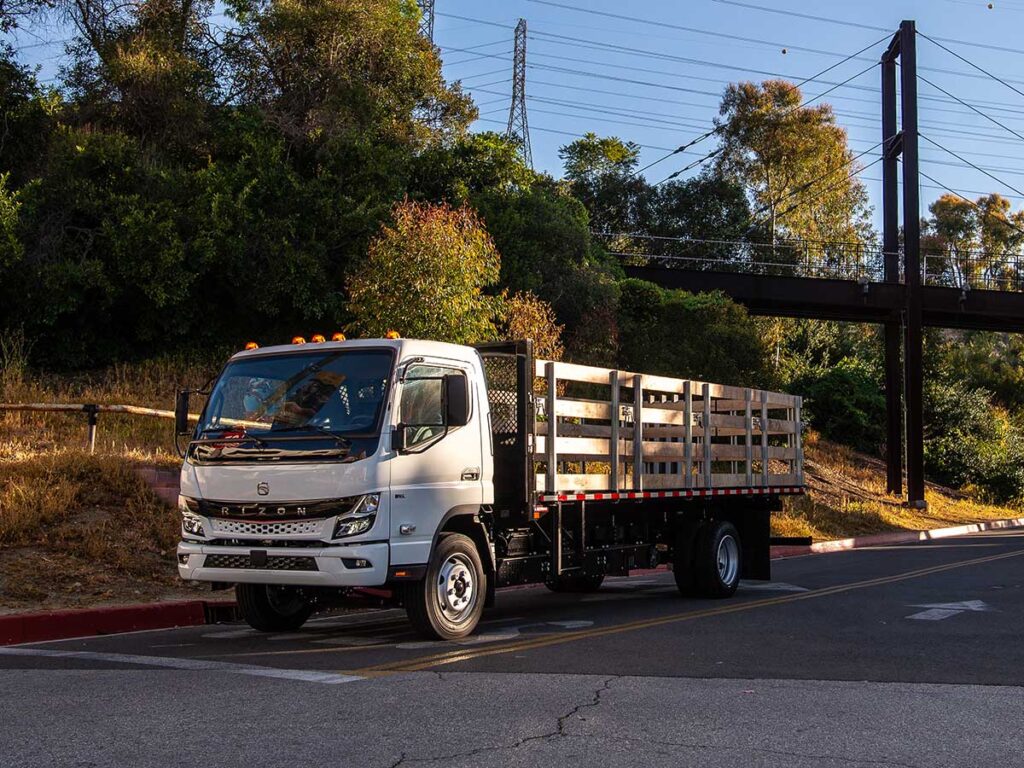When purchasing charging hardware, keep in mind that each vehicle has its own limit on the rate of AC and DC charge that it can accept. For example, a Hyundai IONIQ 5 has an 11.5 kW charging capacity for Level 2 charging, while the Audi E-tron has a maximum 9.6 kW. The Ford F-150 Lightning extended-range has an onboard charger capable of 19.2 kW. And many EVs have a maximum DC charge capability of 115 kW. (All commercial charging hardware will self-adjust to the vehicle’s capacity.)
Charging speeds and electrical supply
In EVs, faster charging isn’t necessarily better. When choosing hardware you’re considering the distance the vehicle will travel each day, the time available for it to be parked and plugged in, the charging speed of the equipment, the charging capacity of the vehicle and the electrical supply needed to power everything.
Here’s a chart that shows charging speeds with kW ratings and amps needed, along with sample times for charging a Ford E-Transit van with the older 68 kWh battery. Note that your amperage at the panel will always need to have a buffer to supply the charging hardware for safety. For instance, to install an 80-amp, 19.2 kW charger, you will need a 100-amp breaker in your panel. (This is an illustration only – note that the onboard charger of any E-Transit van can only charge at a peak power of about 175 kW.)
| Charge speed in kilowatts (kW) | Amps | Breaker size (Amps) | Time to charge 68 kWh battery |
| DC Fast Charge | from 10 to 80 per cent | ||
| 350 kW (unlimited) | 2 x 231 A | 2 x 300 A | 10m |
| 180 kW | 230 A | 300 A | 18m |
| 120 kW | 153 A | 200 A | 27m |
| 90 kW | 115 A | 150 A | 36m |
| 50 kW | 64 A | 80 A | 1h 4m |
| 24 kW | 40 A | 50 A | 2h 13m |
| Level 2 | from 0 to 100 per cent | ||
| 19.2 kW | 80 A | 100 A | 4h 5m |
| 11.52 kW | 48 A | 60 A | 6h 45m |
| 9.6 kW | 40 A | 50 A | 8h 10m |
| 7.68 kW | 32 A | 40 A | ~12h |
Each vehicle has an internal limit on maximum Level 2 and DC Fast charging speed; 3) For example: the Ford E-Transit van has a battery capacity of 68 kWh or 89 kWh, but a maximum charging rate of 115 kW or 175 kW. Sources: ABB; Ford
How to make your choice
Fleet operators will likely want to look to Level 2 charging as the primary energy source for light-duty vehicles. These chargers can be installed either at a central depot or at drivers’ homes, and allow fleets to charge during the overnight hours when, in many regions, electricity rates are lower, which reduces costs.

For medium-duty vehicles, such as Class 5 or 6, or heavy duty tractors, fleets will likely need to add some DC charging to their plans (DC chargers start at 24kW). “Fleet vehicles will often have larger batteries than typical passenger EVs, requiring even faster charging,” writes charging hardware maker ABB E-Mobility in a recent report. “Consider the math for a 200 kWh battery electric delivery truck. With a typical AC charger rated at 7.4 kW, it may take up to 24 hours to recharge that vehicle. A Destination DC charger brings that charge time down to a more realistic eight hours of overnight charging.” Your fleet vehicle provider may have a ready-made solution for charging to offer when you purchase or lease your new vehicles, but you should not feel obliged to use the manufacturer’s hardware, as long as what you choose is compliant.
In the final topic on charging, learn more about getting the most from managed charging.
Reproduction of any or all of this material is strictly prohibited without permission. Please contact fleets@electricautonomy.ca for inquiries. Copyright © 2025 – Electric Autonomy Canada – ArcAscent Inc. – All Rights Reserved
Want to learn more? Sign up or log in so you can track your progress, earn a course certificate and receive exclusive invitations to our live learning sessions.